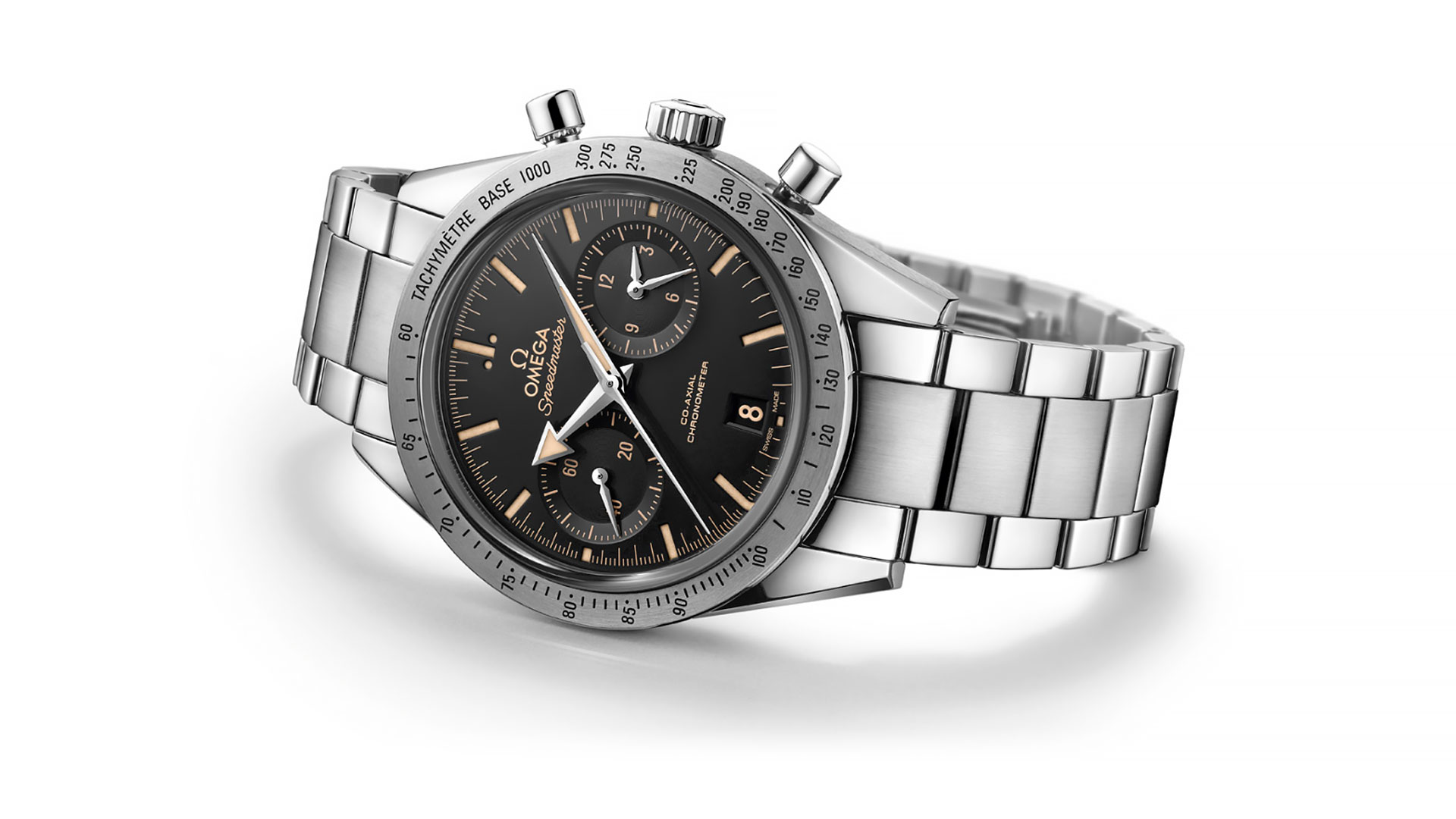

You can be forgiven for thinking Omega invented the tachymeter and the chronograph. Neither is true (both ideas date to the 1800s) but in 1957 the famous Swiss watchmaker, already world-renowned as the official Olympics timekeeper, introduced its Speedmaster timepiece. After that release every major watchmaker, even mighty Rolex, had no choice but to modernize. But first, the context.
The Cold War was hot and the space race was hotter in 1957, the year the Soviets sent a dog into space and the Sputnik satellite into orbit. By 1959 they’d landed a probe on the Moon and in 1961 they sent a man orbiting the globe. Back on earth automotive racing was in its heyday; Formula 1 saw a heated battle between Stirling Moss and Juan Fangio, while Nascar was entering its ascendance.
All this just two years after the worst accident in auto-racing history, the Le Mans tragedy that killed at least 80 spectators. Amazingly, it only seemed to popularize racing.

Into that era, and into an ever-more prosperous American economy, Omega launched the Speedmaster, an overtly simplified racing watch targeted directly at fans (or wannabes) of all things horsepower. The features are the opposite of flamboyant—entirely and completely pragmatic. The tachymeter (not to be confused with a tachometer) is incredibly wide, with the indexed numerals displayed on the bezel at the outermost rim of the timepiece for better legibility. That was actually a bold move at the time, as mosts tachymeters up until that point were displayed directly on the watch dial. Legibility was always the key distinguishing characteristic of the Speedmaster; it was, and still is, a timing instrument, not jewelry.
For that reason Omega has never crowded the dial with information, so despite iterative changes indicators as well as hands have always been easy to read in all lighting conditions. That’s key when the goal of the tachymeter is to measure the speed of your car over the course of a lap, as outlined in the ad below, from the late 1950s. Note too that the ad plainly dovetails with the mood of the day: “You can use the Speedmaster to determine the production rate of a worker or a machine, or the speed of a projectile, a car, an athlete.”

You may not have needed determine the rate of a production worker, and you may not have fit into the ad’s buying demographic of “scientists, engineers, T.V. and movie directors,” but it was certainly sexy to pretend you did—and the chance to wear the same watch as racing and industry luminaries sold a lot of Speedmasters back then. It continues to do so today.
But for Omega the true “sell” for the watch came with its association with NASA more than with auto racing, because the Speedmaster became the official wristwatch of the space program in 1965 (after astronaut Ed White was shown on TV wearing one strapped to his wrist during a spacewalk in 1964). That reputation for ruggedness went even further when Neil Armstrong and Buzz Aldrin wore their Speedies to the moon; Aldrin walked on its surface wearing his.
Those watches were actually slightly different than the original. As Omega revised the Speedmaster over the years, what became known as the “moonwatches” were characterized by extra-wide lugs that encircled oval cases—the better to protect the watches’ pushers from being accidentally depressed. Again: functionality before beauty, although the profoundly aspirational nature of that function gave it an elegance all its own.

In the years to come Speedies strayed far from the original as Omega stumbled and eventually fell before being snapped up by the Swatch Group. Despite the analogy of Wal-Mart buying up the mom-and-pop store, the sale was a very good turn for Omega because it brought the brand out of ruin and gave Omega economies of scale and prioritized classic design back into the frame. The watch you see at the top of this page, the Speedmaster ’57, with its “broad arrow” hands and silver bezel, is a direct tribute to the original Speedie. At a starting price of about $6,100 it’s costly but still affordable relative to getting your hands on an original: in December 2015 one model sold for $118,750 at a Christie’s auction, which should tell you that an Omega Speedmaster purchased today probably won’t lose value like that an off-lease Chrysler 200.
A fun historical footnote: James Bond isn’t actually partial to Omegas. That’s a recent product placement, circa Pierce Brosnan’s turn in the role. The Bond in Ian Fleming’s Original series dug Rolexes. We’re partial to vintage Daytonas ourselves—another icon we’ll soon discuss in Classics Department.